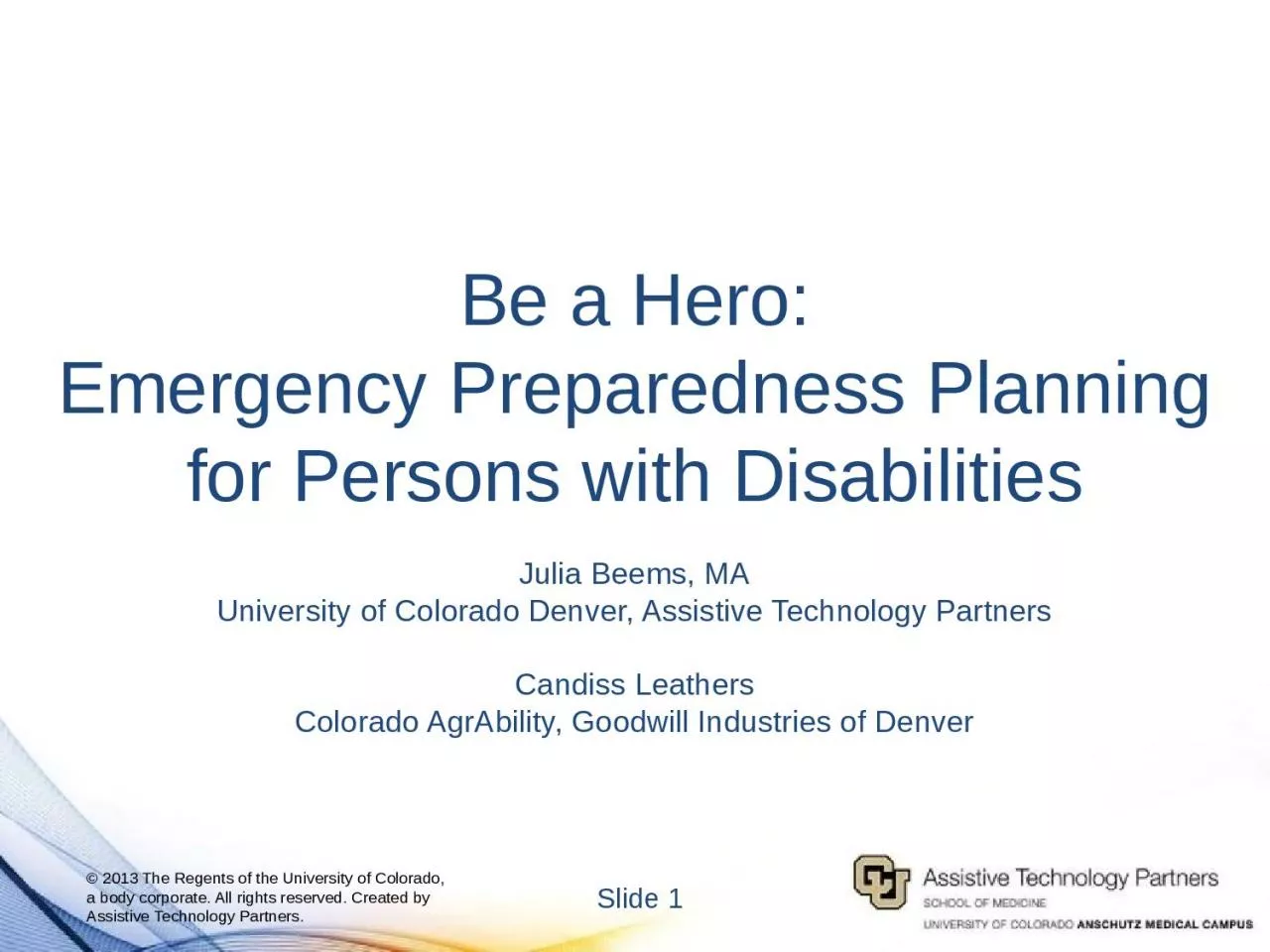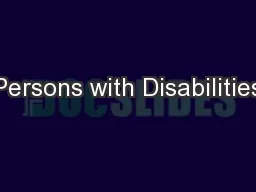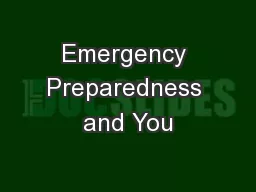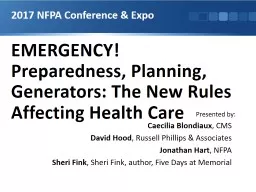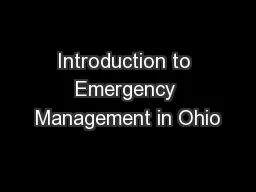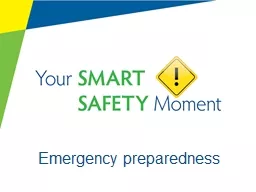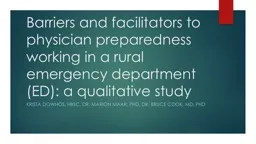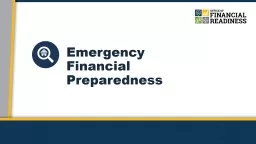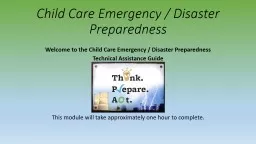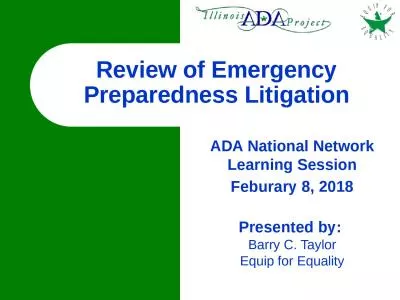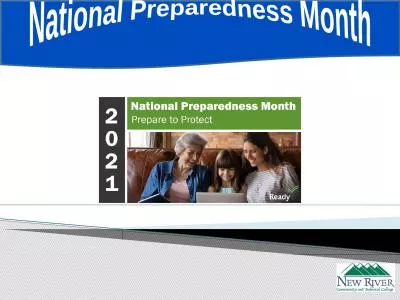PPT-Be a Hero: Emergency Preparedness Planning for Persons with Disabilities
Author : jovita | Published Date : 2024-02-09
Julia Beems MA University of Colorado Denver Assistive Technology Partners Candiss Leathers Colorado AgrAbility Goodwill Industries of Denver What We Are Going
Presentation Embed Code
Download Presentation
Download Presentation The PPT/PDF document "Be a Hero: Emergency Preparedness Planni..." is the property of its rightful owner. Permission is granted to download and print the materials on this website for personal, non-commercial use only, and to display it on your personal computer provided you do not modify the materials and that you retain all copyright notices contained in the materials. By downloading content from our website, you accept the terms of this agreement.
Be a Hero: Emergency Preparedness Planning for Persons with Disabilities: Transcript
Download Rules Of Document
"Be a Hero: Emergency Preparedness Planning for Persons with Disabilities"The content belongs to its owner. You may download and print it for personal use, without modification, and keep all copyright notices. By downloading, you agree to these terms.
Related Documents

